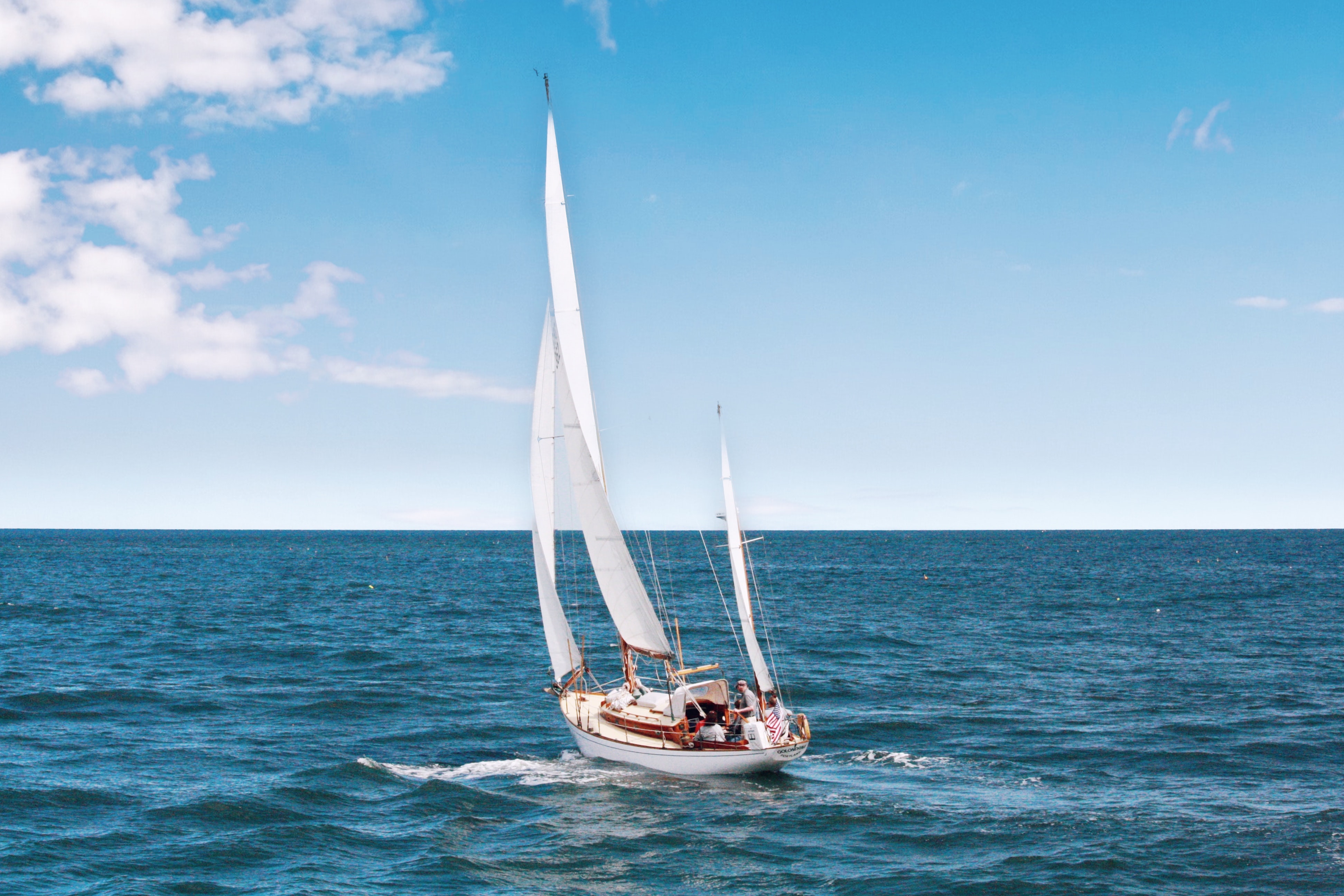A sailboat has several working parts that come together to help the boat move - whether propelled partly or entirely by sails. Most are universal across crafts - including the hull, keel, rudder, mast, sail, boom, backstay, and forestay. These items are essential to operation, meaning every sailor should know what they do.
For this article, we get into the various intricacies that are unique to sailboats.
Hull
The hull is the shell of the boat. It serves as the mounting point for all internal components onboard. The symmetrical shape balances the sailboat and reduces drag as it moves in the water.
Sailboat hulls are generally constructed from fiberglass or hardwood, although some are made out of aluminum, steel, and even ferrocement (a composite structural material consisting of cement mortar reinforced by several closely spaced layers of steel wire mesh).
Keel
The keel is the bottom-most structural element on the sailboat. It serves several purposes: providing counterbalance, controlling sideways movements, holding the boat’s ballast, and preventing the vessel from capsizing. When a sailboat leans from side to side, for example, the keel and its ballast counteract this movement to prevent the boat from tipping over.
There are several different types of kneels. The most common for recreational sailboats are the full keel and fin keel. A full keel is large and very stable. It is typically half or more of the sailboat’s length. A fin keel is much smaller, offers less water resistance, and therefore enables higher speeds.
Rudder
The rudder is the primary control surface used to steer a sailboat. It has a vertical blade that either attaches to the flat surface of the stern or under the boat. The rudder functions by deflecting water flow.
When the boat operator turns the rudder, the water begins to strike it with increased force on one side and decreased force on the other side. This turns the sailboat in the direction of the lower pressure.
Mast
The mast is a tall vertical pole that supports the sails. There are various types of masts, including:
- The Foremast: the first mast near the bow of the boat, before the mainmast.
- The Mainmast: the tallest mast, usually located near the boat’s center
- The Mizzenmast: the third mast closest to the stern. It is always shorter than the mainmast and generally shorter than the foremast as well.
Larger ships will typically have several masts.
Sail
The sail propels the boat. Sailboats can have more than one, depending on their size.
- Mainsail: the principal sail on the boat. It is located on the backside of the mainmast, serving as the main source that propels the vessel windward.
- Jib: the triangular forward sail. It is typically smaller than the mainsail.
- Spinnaker: a loosely-mounted sail that flies in front of the boat during conditions of low wind.
Boom
A boom is an important tool for navigation. It includes a pole made of wood or another type of lightweight metal that is located along the bottom of a fore-and-aft rigged sail.
This improves the shape of the sail and control of the angle - ultimately controlling the sails. The boom’s main function is to keep the foot of the sail flatter when the sail angle is away from the centerline.
Backstay
The backstay is a standing rigging, running from the mast to the transom. It counteracts the forestay and the jib and directly influences the mainsail’s shape and the headsail.
There are two general types of backstays:
- Permanent backstay: attached to the top of the mast and might be readily adjustable.
- Running backstay: attached around two-thirds up the mast, sometimes at multiple locations.
Most sailboats will have a permanent backstay, while only some have permanent backstays paired with a running backstay.
Forestay
The forestay is a piece of standing rigging that keeps the mast from falling backward. One end is attached either at the top or at certain points near the top of the mast. The other end attaches to the bow.
Forestays can be constructed from stainless steel wire, stainless steel rod or carbon rod, or galvanized wire or natural fibers.

